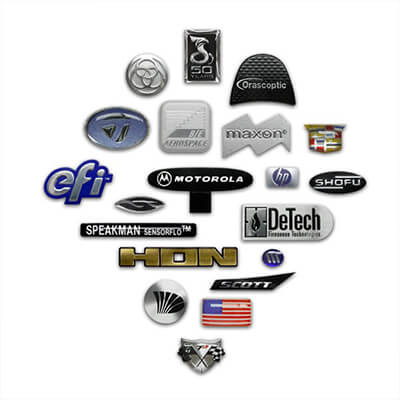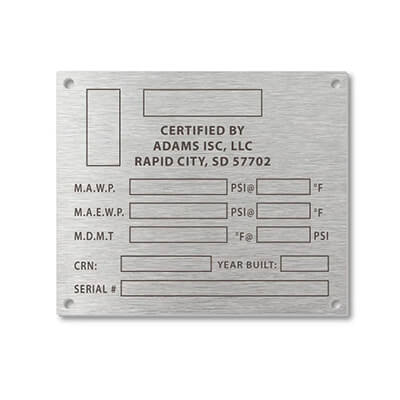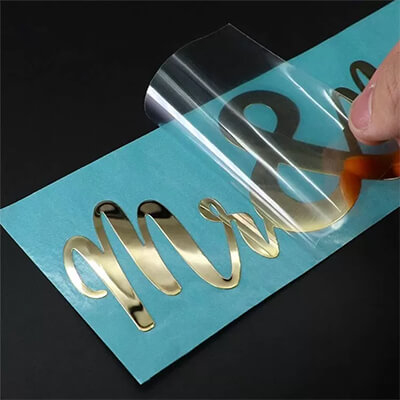Himgo delivers high-quality, cost-effective metal nameplates for you.
Two Powerful Methods, One Critical Decision
When it comes to custom metal nameplates, the way your information is added matters just as much as the material itself. Two of the most popular methods—engraving and etching—are often confused, yet they serve different needs depending on your budget, environment, and visual requirements.
So which one is right for your product? Let’s break it down.


1. What Is Engraving?
Engraving is a mechanical or laser-based process that physically cuts into the surface of the metal.
🔹 Common Engraving Methods:
CNC Engraving – Machine-carved using precise tools
Laser Engraving – Burned into the surface using high heat
✅ Advantages:
Highly durable and wear-resistant
Deep markings – easy to read even after abrasion
Excellent for serial numbers, equipment ID, traceability
❌ Limitations:
More time-consuming = higher cost per unit
Less color flexibility unless filled with paint or enamel
2. What Is Etching?
Etching is a chemical or electrochemical process that removes the surface layer of the metal to form a design.
🔹 Common Etching Types:
Chemical Etching – Acid or ferric chloride used to dissolve selected areas
Electro-Etching – Electricity plus chemicals to engrave metal surface
✅ Advantages:
Excellent detail for logos, fine lines, QR codes, graphics
Cost-effective for large runs or thin metal tags
Can be combined with color filling or anodizing
❌ Limitations:
Slightly less resistant to deep abrasion
Depth is shallower than engraving
3. Side-by-Side Comparison Table
| Feature | Engraving | Etching |
|---|---|---|
| Depth | Deeper cuts | Shallower surface removal |
| Durability | Extremely high | High, but slightly less |
| Detail Level | Good, limited for very fine details | Excellent for intricate designs |
| Cost Efficiency | Higher (esp. small batches) | Lower for larger quantities |
| Customization Speed | Medium (depends on setup) | High-speed for volume production |
| Best for | Serial codes, data plates, rugged use | Logos, branding, decorative elements |
View our metal nameplates products
4. Which Process Is Best for You?
The ideal choice depends on your application scenario:
🔧 Choose Engraving If You Need:
Long-term durability under heavy abrasion
Deep, permanent identification (e.g., tools, machinery)
High-value industrial parts with serial codes
🎨 Choose Etching If You Need:
Graphic or logo-rich nameplates
Large batch orders at lower unit cost
Enhanced branding and clean surface finishes
5. Himgo Offers Both – With Expert Support
At Himgo, we don’t just offer one or the other—we help you choose the best fit based on your industry, design, and quantity.
✅ Engraving + color infill options
✅ Etching + anodizing, screen print, or embossed finishes
✅ Fast sampling for both methods
✅ Engineering consultation to guide material + process combo
📩 Request a Quote for Engraved or Etched Nameplates →
📦 Need to See the Difference? Order a Sample Set →




